That kind of title can only mean that it’s wild orchid season. Enchanting, bizarre, complicated – some of them are also very rare, but where the chalky fields of the North Downs have escaped modern agriculture, they host a strange and wonderful show.
Of wild men, for starters. This is a man orchid, an endangered species in the UK which acquired its name from the little long-armed figures dangling from each flower.
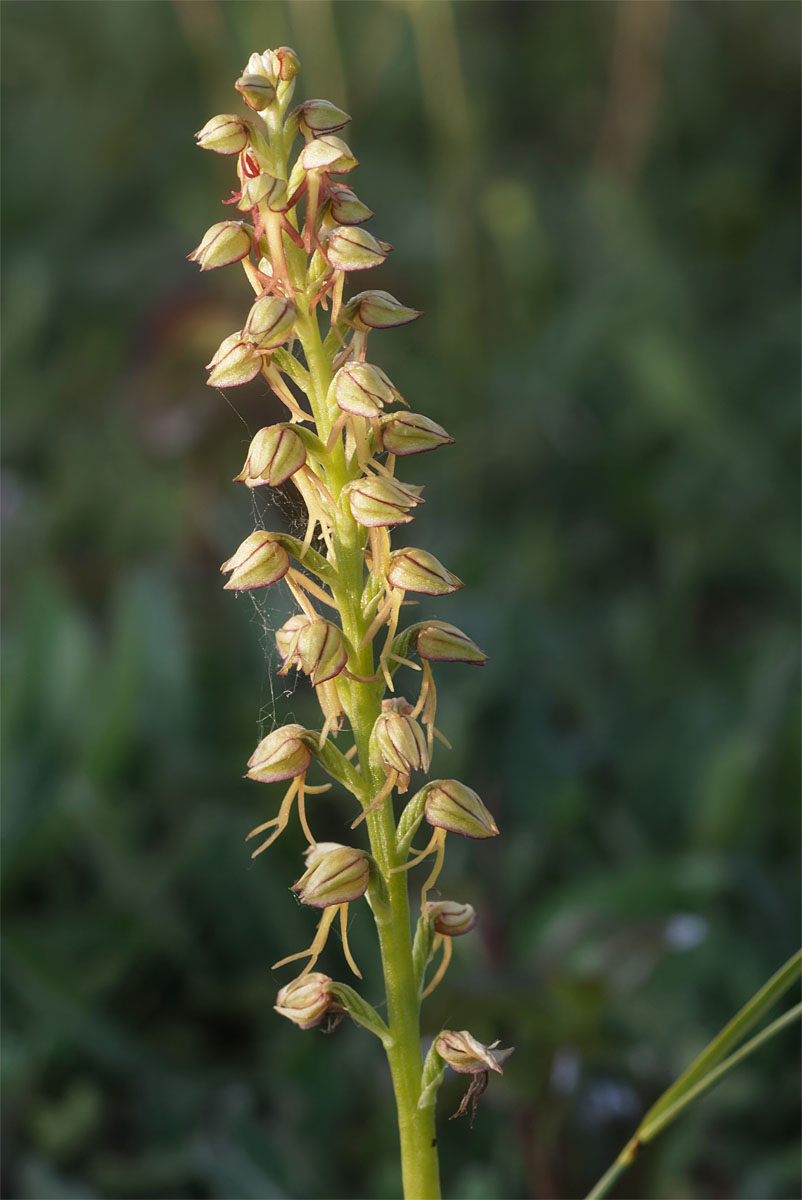
Then, there are the replica flies.
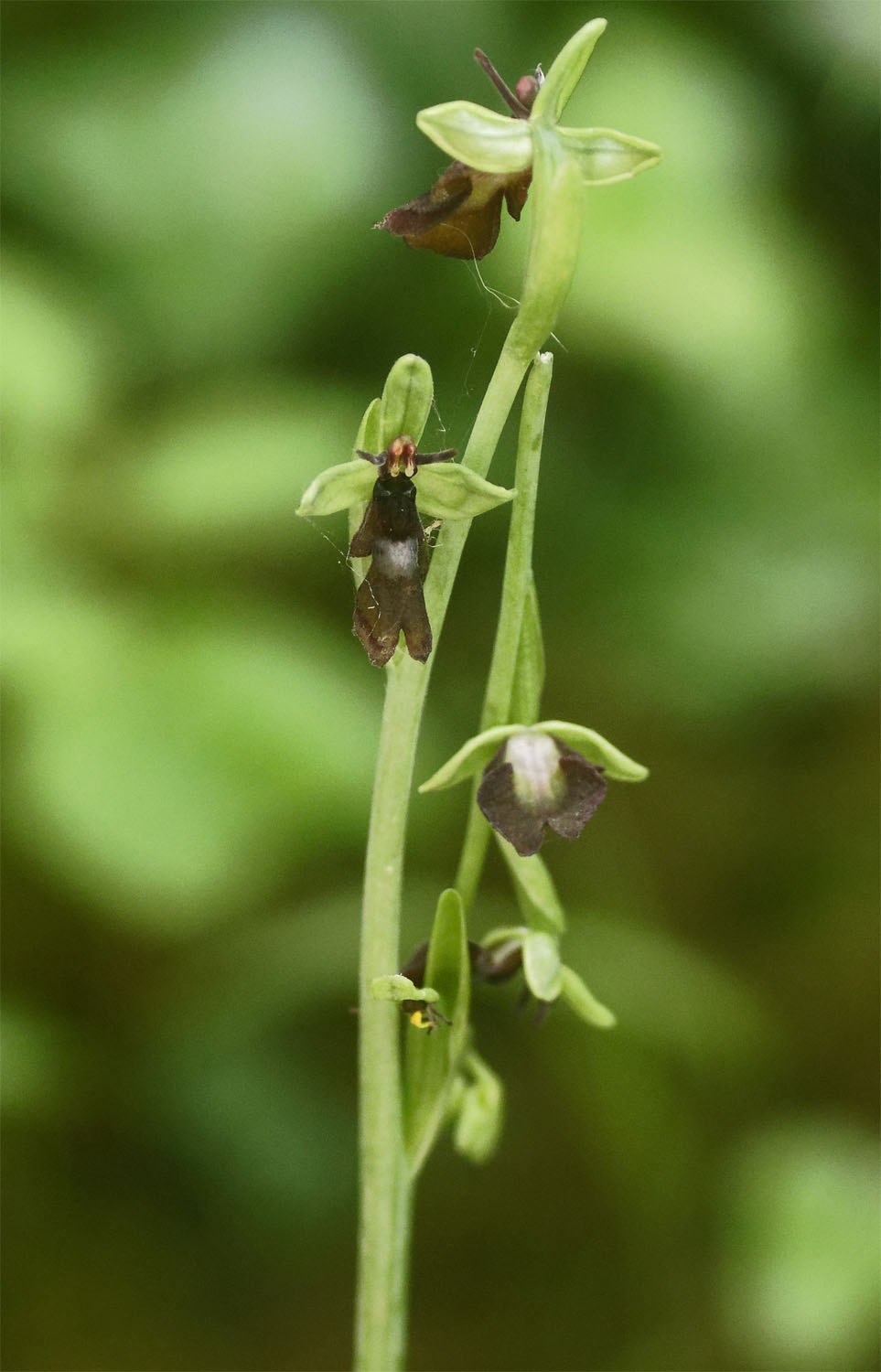
It’s hard not to wonder what the spider is concluding as it encounters a make-believe version of its traditional prey.
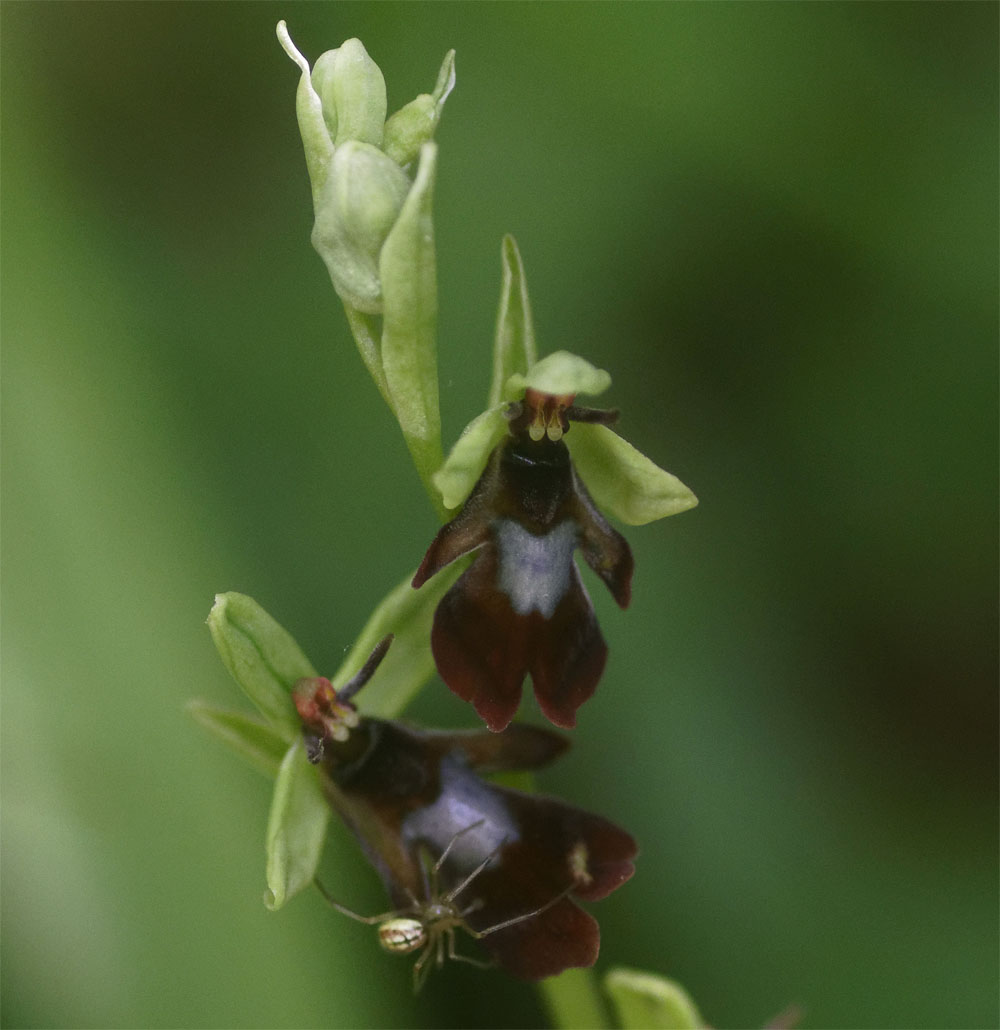
While fly orchids are rare, bee orchids are more widespread. But a single flower is the culmination of up to eight years of growth, so their appearance in specific sites is unpredictable.
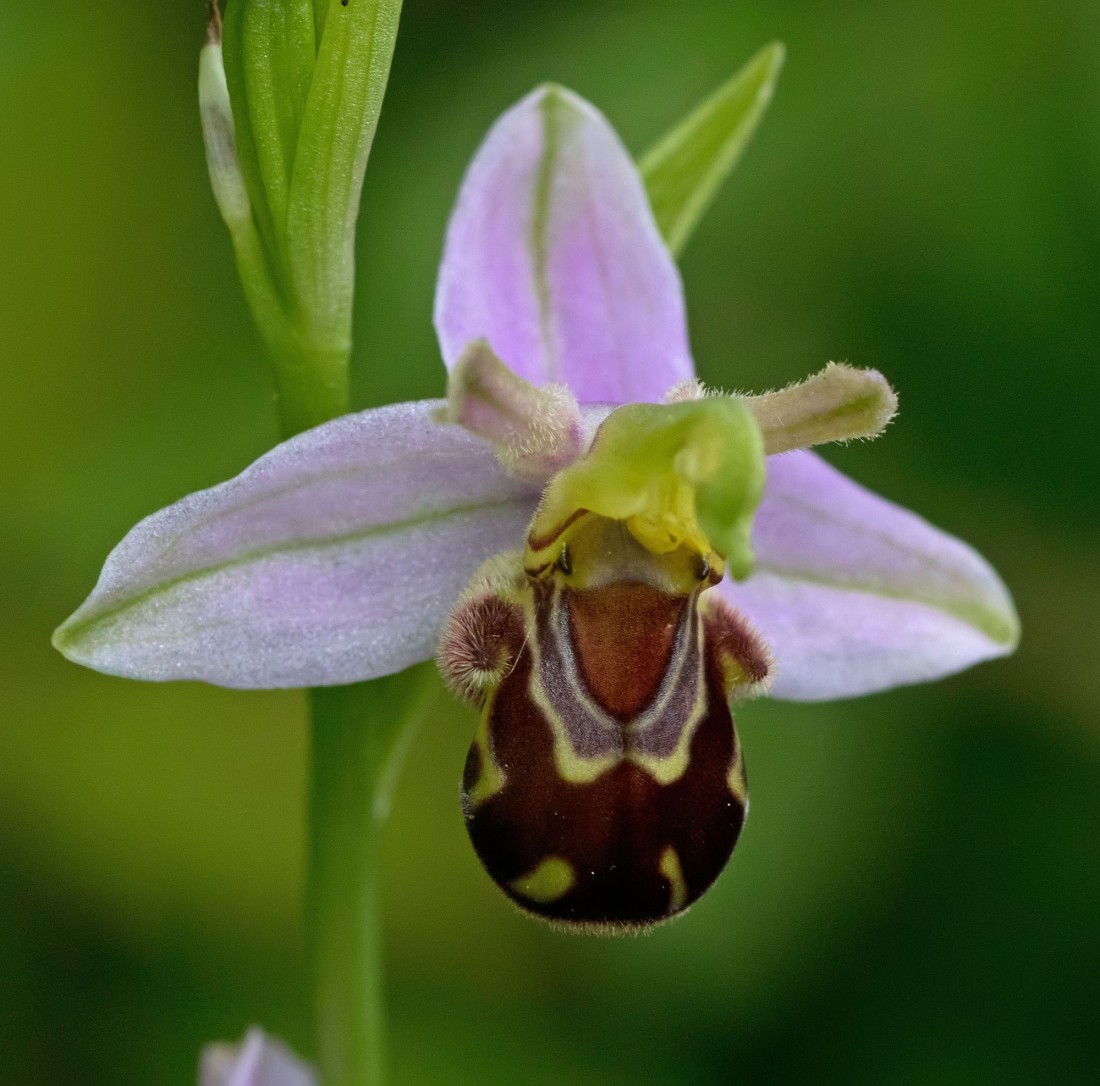
Our most familiar orchid, however, is the beautiful common spotted-orchid, which sprinkles old meadows with pink blooms.
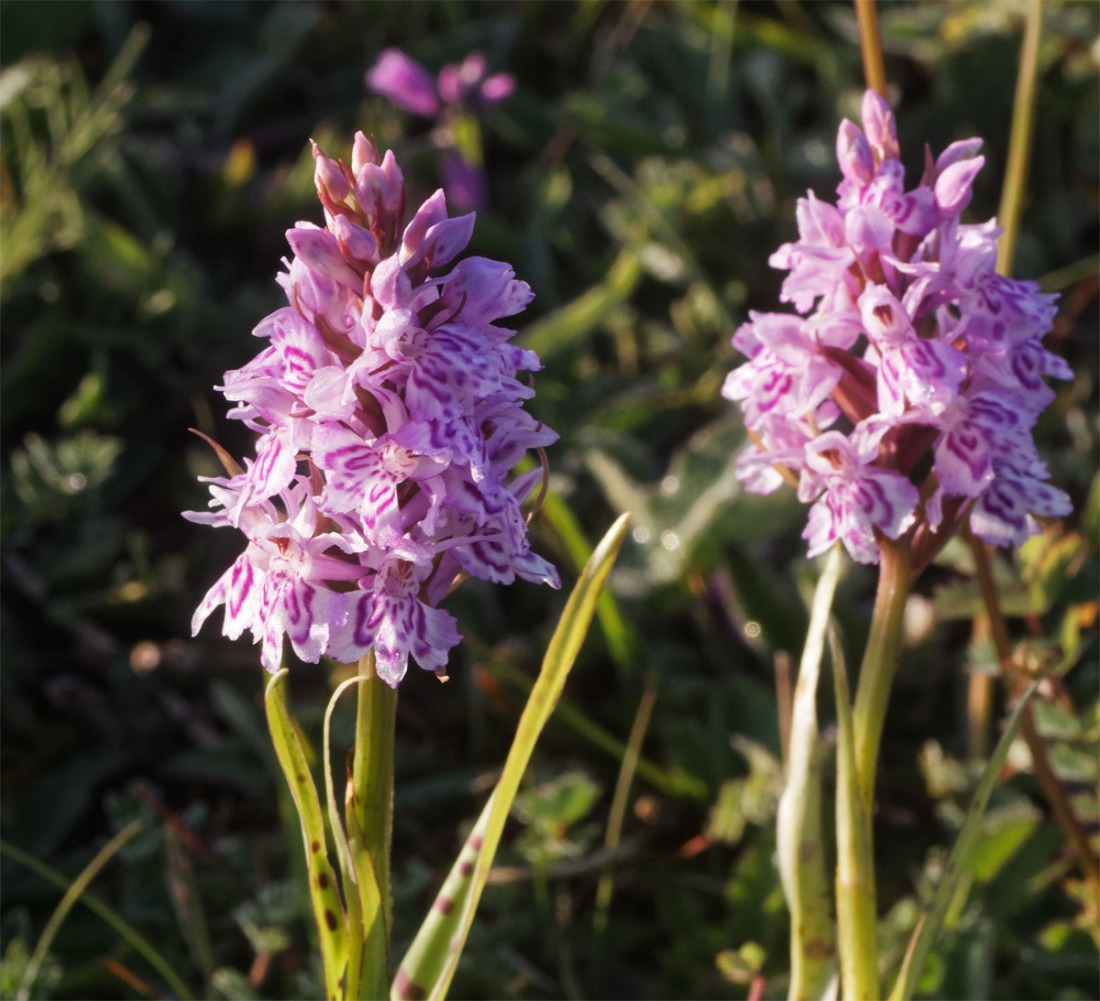
Not that all orchids are bright; the twayblade is easily overlooked.
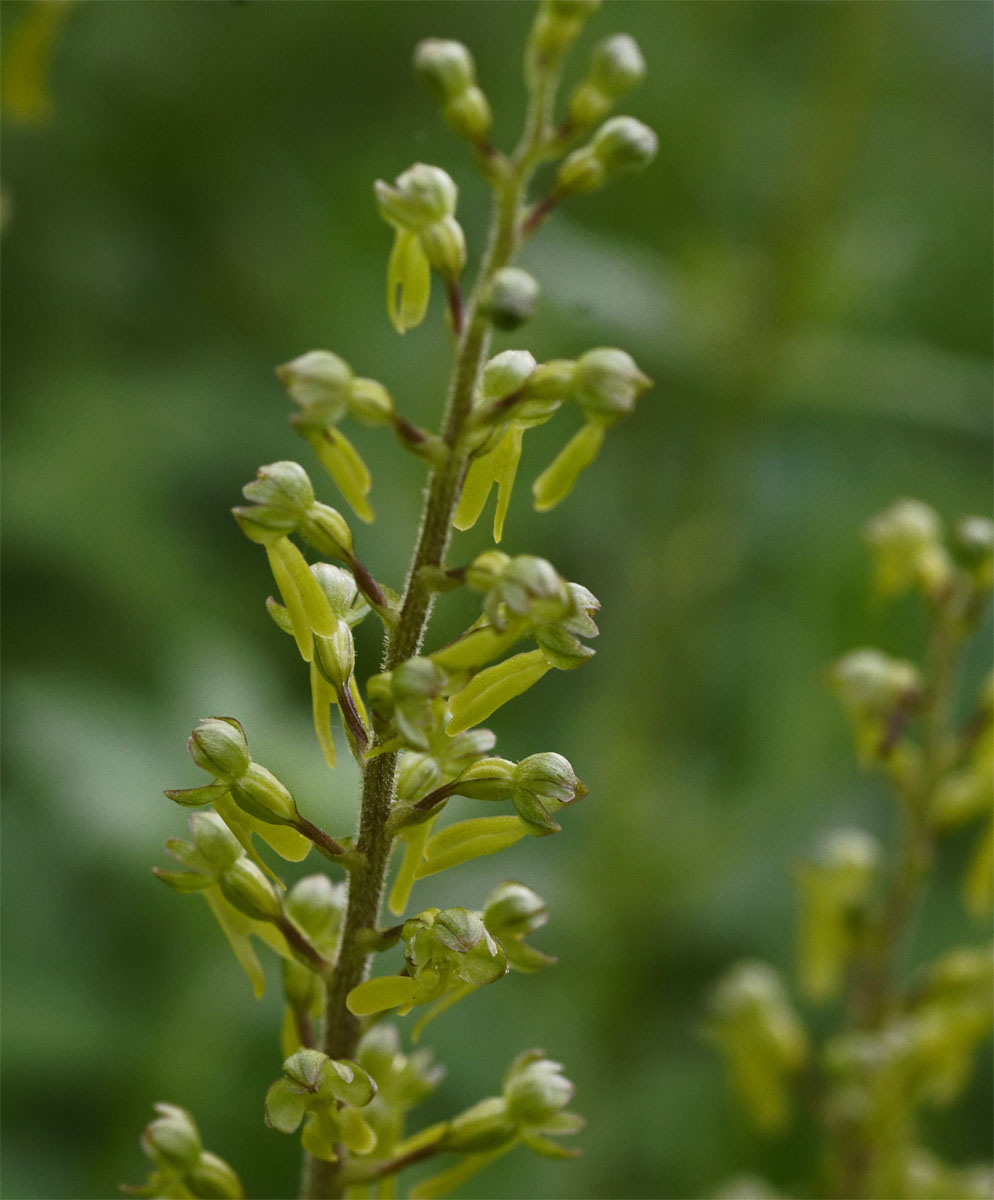
Many do score high on the conspicuous scale, however. The rare green-winged orchid is another species typically found on chalk. And like all its relatives, it only survives because of fungi. Orchid seeds contain almost no energy and cannot germinate without forming symbiotic relationships with their less lauded partners.

Fungi are very sensitive to ‘improvements’ such as fertilisers, ploughing and reseeding. So orchids are more than just a pretty show: they also reveal where soils are still undisturbed.
We use flowers to symbolise so much human emotion. It is fair to say that these ones are symbols of our gentleness upon the land too.
Beautiful photos of these extraordinary looking flowers.
LikeLiked by 1 person
Thanks Belinda. Orchids truly are the strangest and most exotic of plants.
LikeLiked by 1 person
Lovly flowers
LikeLike
I love orchids, but have only ever seen the Common Spotted Orchid. These are wonderful photos and information Adele. Thank you for sharing!
LikeLiked by 1 person
Thank you Pete. It’s always a treat to see any orchid. We seem to be having a good season for them down here in Surrey, despite the abysmal weather!
LikeLiked by 1 person
I like your idea that wild orchids symbolise our gentleness on the land.
LikeLiked by 1 person
Thank you Susan, and welcome to my blog 🙂
LikeLike